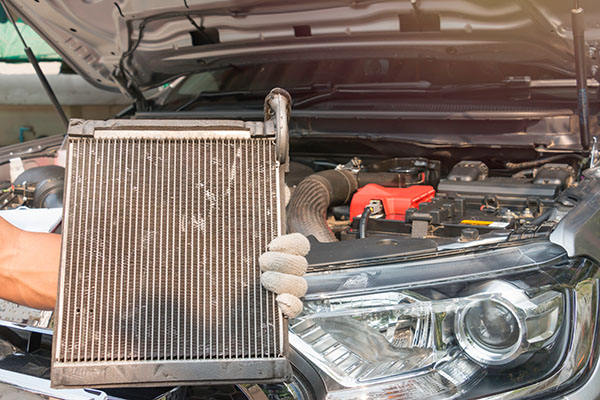
The cooling system in your vehicle plays a crucial role in maintaining the optimal temperature of your engine, preventing overheating, and ensuring efficient performance. Understanding how the cooling system works can help you recognize the importance of regular maintenance and troubleshooting potential issues. In this blog post, we will go into the key components and how they function, to make it easier to understand.
Radiator
At the heart of the cooling system lies the radiator, a heat exchanger designed to dissipate heat from the engine coolant. The radiator consists of a series of small tubes that run through a grid of fins. As the hot coolant flows through these tubes, the fins transfer heat to the surrounding air, cooling the fluid.
Coolant
The coolant, often a mixture of water and antifreeze, plays a vital role in the cooling process. It circulates through the engine in a closed loop, absorbing heat generated by the combustion process. The coolant then carries the heat to the radiator, where it releases the accumulated heat before returning to the engine to repeat the cycle. The antifreeze portion of the mixture helps prevent freezing.
Water Pump
The water pump is responsible for circulating the coolant throughout the cooling system. It is typically driven by a belt connected to the engine's crankshaft. As the engine runs, the water pump propels the coolant from the radiator through the engine and back to the radiator, ensuring a continuous flow.
Thermostat
Thermostats act as temperature-sensitive valves that regulate the flow of coolant between the engine and the radiator. It remains closed when the engine is cold, diverting the coolant directly back to the engine to facilitate a faster warm-up. As the engine reaches its operating temperature, the thermostat opens, allowing the coolant to flow into the radiator, where it can be cooled before returning to the engine.
Hoses and Belts
Hoses connect various components of the cooling system, ensuring the smooth flow of coolant. The belt, which is usually called an auxiliary belt, powers the water pump. Regular inspection of hoses for cracks or leaks and replacement of worn-out belts are essential for maintaining the system's efficiency.
Professional Cooling System Service And Maintenance At Future Auto Service!
If you are looking for a professional approach to your vehicle problems, make sure to visit our shop! From cooling system leaks to complex repairs, the list of services at our shop is as big as it can get, so make sure you take advantage of it.